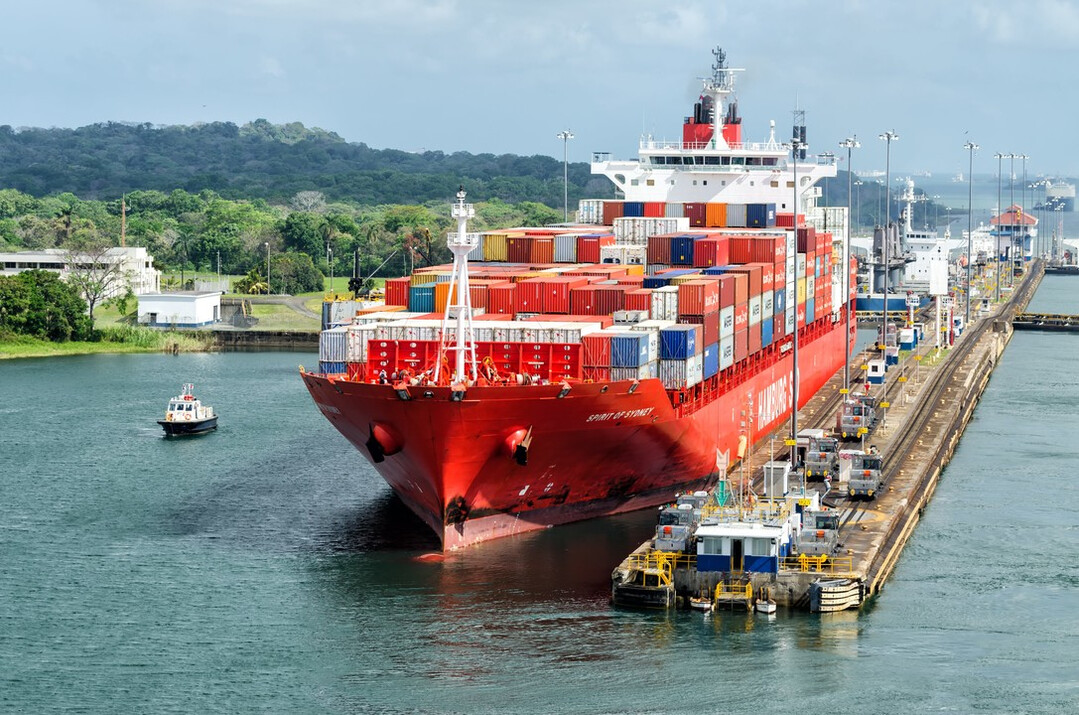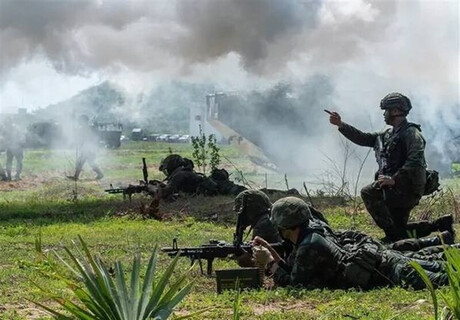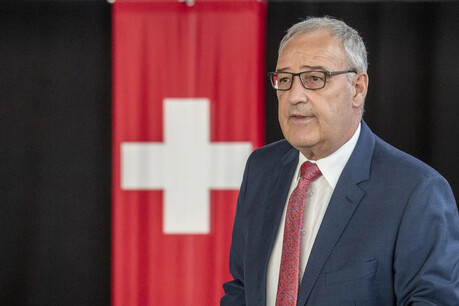
In October 1858, U.S. President James Buchanan dispatched 19 warships to Paraguay, the largest naval force in U.S. Navy history at the time. This was in response to a previous Paraguayan attack on the USS Water Witch, which was exploring the Paraguay-Paraná inland river system. This waterway subsequently faded from Washington's attention, overshadowed by more critical chokepoints like the Panama Canal and Arctic shipping lanes. However, recent events have transformed this Hidrovía—South America’s most commercially significant waterway, stretching over 2,000 miles and connecting more than 100 inland ports—into a region where the United States and China are vying to secure essential commodities and minerals.
The Hidrovía encompasses the entire Paraguay River, originating upstream in Mato Grosso, Brazil, before converging with the Paraná River at the Paraguay-Argentina border. The Paraná then flows through Argentina to Uruguay and the Atlantic. Now, a surge of infrastructure projects along this waterway is re-establishing this corridor as a critical battleground for regional trade and security.
Increasing Traffic and Immense Economic Potential
Traffic is increasing so rapidly that the Rosario Commercial Exchange (BCR), the Paraná River's main grain inland port, predicts that cargo transported through the waterway could double by 2035. Already, the waterway carries over 100 million tons annually of soy, corn, iron ore, and critical minerals. The BCR projects that by 2030, countries in the Paraguay-Paraná river basin will supply 40% of the world's grain, along with Vaca Muerta shale gas and lithium and copper from northwestern Argentina.
Argentina and Paraguay are planning large-scale dredging projects to deepen the river and accommodate larger barge convoys. Already, the waterway carries over 85% of Paraguayan trade and roughly 80% of Argentine exports. Investment and foreign interest are growing, with China and the United States making moves to assert influence in the corridor. Transnational criminal organizations are also utilizing the waterway for drug trafficking and other illicit activities from the Andes to the Atlantic.
Infrastructure Investment and Drought Impacts
The demand for infrastructure is spurred by years of underinvestment and worsening droughts. On Argentina’s Paraná River, vessels run aground about once a month, forcing ships to reduce their cargo. Last year, the Paraguay River experienced historically low water levels, costing the Paraguayan economy an estimated $300 million and compounding the costs from a severe drought in 2020-21.
This combination of vulnerability and strategic value attracts external actors like China. Beijing continues to expand its access to South American agricultural and mineral resources, recently opening the $3.5 billion Chancay port in Peru and planning a rail connection through Brazil. In March, Argentine lithium carbonate destined for China began shipping through Rosario, which is expanding its mineral storage facilities to meet demand.
Chinese firms are seeking a larger footprint. In February, the Javier Milei administration halted the concession for a 30-year dredging contract due to apparent irregularities, including only one Belgian firm bidding. Shanghai Dredging Co., a subsidiary of China Communications Construction Company (CCCC)—which is linked to several U.S.-sanctioned entities—could re-enter the bidding process if new terms allow state-owned enterprises to participate.
However, Argentina’s main artery dredging project is only one piece of a broader push. Upstream, Bolivia is seeking to improve its Puerto Busch port, and Brazil is moving ahead with plans to dredge the upper Paraguay from Corumbá to the Rio Apa segment, despite concerns about severe environmental consequences for the Pantanal, the planet's largest inland wetland and a critical biodiversity hotspot. Similar concerns have been raised regarding Argentina's dredging. These projects are expected to be key points of environmental contention in the coming years as climate change, deforestation, and environmental degradation reinforce each other's worst outcomes and stress freshwater resources.
Paraguay’s Pivotal Role and Potential for US Cooperation
Paraguay sits at the heart of the river system, and with a population of just over 6 million, it operates the world’s third-largest river barge fleet, according to its Ministry of Commerce. Here, strategic competition extends beyond state actors. Paraguay, located between Brazil and Argentina, has become a transshipment channel for regional drug trafficking, with groups like Brazil’s Primeiro Comando da Capital (PCC) using river ports like Villeta, less than 30 km from Asunción, to move Andean cocaine to Atlantic markets. With limited state capacity, Paraguay struggles to counter these flows, feeding money laundering networks highlighted by the U.S. Treasury Department’s Office of Foreign Assets Control (OFAC).
Under the current Trump administration, there are signs of renewed cooperation. Earlier this year, Paraguay acquired its first aerial radar system through the U.S. Foreign Military Sales program, enhancing its ability to monitor remote areas. In March, the U.S. Drug Enforcement Administration (DEA) and Paraguay’s National Anti-Drug Secretariat (SENAD) renewed their partnership. Washington could build on this by addressing port vulnerabilities along the river, for example, by deploying U.S.-sourced container scanners, like those previously donated by Taiwan.
Broader engagement is also possible. The U.S. Army Corps of Engineers (USACE) previously proposed dredging and infrastructure studies for the river section between Concepción and Asunción, which would likely receive renewed support from Paraguay's pro-U.S. President Santiago Peña. Downstream, President Milei’s strong collaboration with Washington offers a rare opportunity for joint action along the river corridor from Asunción to Buenos Aires. This has the backing of Paraguay’s main soy and grain exporters association, with a new USACE agreement with Argentina’s General Port Authority supporting navigational improvements.
Moreover, Washington appears to be recognizing Paraguay's immense significance. Secretary of State Marco Rubio met with President Peña in January, following a 2024 visit that marked the first time a sitting U.S. senator had visited Paraguay in 40 years. In May, Rubio urged U.S.-backed AI investments in Paraguay, referencing the surplus energy from the 14-gigawatt Itaipu Dam on the upper Paraná.
U.S. engineering firms, with expertise on the Mississippi River—which shares key characteristics with the Paraguay-Paraná—would be good partners. Capital from the U.S. International Development Finance Corporation (DFC) could stimulate private sector investment, building on DFC support for other regional port projects in Latin America.
Paraguay is already attracting investor interest. The IMF anticipates Paraguay’s GDP will grow 3.8% this year and 3.5% from 2026-2030. Economic activity is concentrating around river hubs like Villeta and Concepción, which will host new fertilizer plants, rice farms, and Paracel’s $4 billion pulp plant—set to be the largest private investment in Paraguay’s history. Exploration for lithium, silicon, and uranium is also underway.
Deepening Competition and U.S. Strategy
However, a U.S. strategy for the Paraguay-Paraná corridor will face headwinds. Beyond Beijing’s broad objective of securing South American commodities, Chinese diplomats are targeting Paraguay, the last South American nation to maintain diplomatic ties with Taiwan.
Chinese demand for South American commodities, expanding export markets in Asia and the Middle East, and the potential EU-Mercosur trade agreement all elevate the Paraguay-Paraná's geopolitical standing. However, unlike the U.S. dispatch of warships in 1858, today’s competition demands diplomacy, technical know-how, and tailored investments. Paraguay offers a win-win port of entry for the United States to enhance its regional influence via the waterway that bears its name—if the U.S. acts before the currents of global competition carry it in another direction.
[Copyright (c) Global Economic Times. All Rights Reserved.]






























